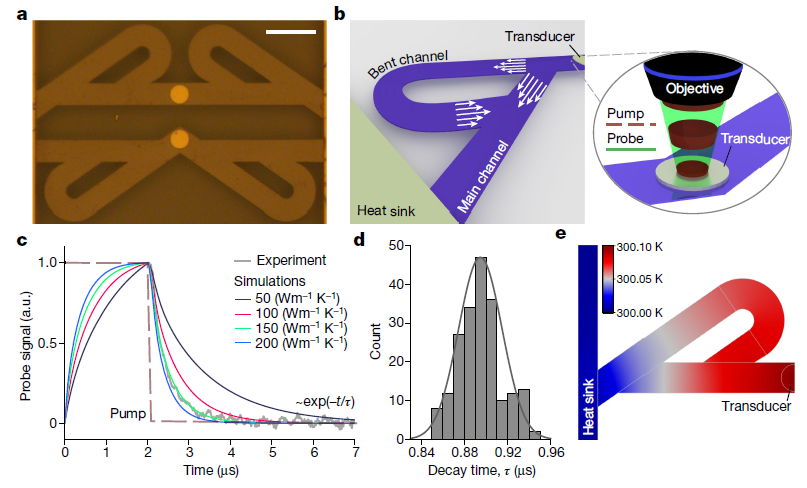On October 16, the prestigious international academic journal Nature published a research achievement co-completed by Professor Ni Yuxiang from the School of Physical Science and Technology at Southwest Jiaotong University. The paper, titled "A graphite thermal Tesla valve driven by hydrodynamic phonon transport," represents a deep interdisciplinary integration of physics, materials science, and other fields, and was collaboratively completed with Professor Masahiro Nomura's team from the University of Tokyo and Professor Guo Yangyu from Harbin Institute of Technology.

The Tesla valve plays a significant role in rectifying fluid flow within microfluidic systems, inspiring researchers to design modern solid-state electronic and thermal rectification devices based on the fluid rectification mechanisms observed in liquid environments. Unlike fluid rectification in microfluidic channels, thermal phonon rectification in micro-solid channels is more complex due to the lack of momentum-conserving collisions between phonons and the relatively low frequency of phonon flow resembling that of liquids. This study achieved thermal conduction rectification in isotopically enriched graphite crystals through phonon fluid dynamics methods. The researchers designed a micron-sized Tesla valve within 90-nanometer-thick graphite and observed a significant difference of 15.2% in thermal conductivity in opposite directions at 45K. This research marks an important advancement in utilizing collective phonon behavior for thermal management in microelectronic devices, laying the foundation for the development of thermal rectification technology in solid-state materials.

Professor Ni Yuxiang has long been engaged in research on thermal conduction at the micro-nano scale, having published over 70 research papers in high-level international journals such as Nature, Physical Review Letters, and Nature Communications, with more than 1,400 citations. He has led three national and provincial projects, including those funded by the National Natural Science Foundation of China and the Outstanding Young Scientists Fund of Sichuan Province, and has participated in key projects under the Ministry of Science and Technology and the National Natural Science Foundation. After being selected as a candidate for the 13th batch of Sichuan Province's academic and technical leaders, he currently serves as an executive director of the Chengdu Physics Society, a member of the Sichuan Physics Society, and a member of the Chinese Association of Engineering Thermophysics. He is also a guest editor for the SCI journals Advances in Condensed Matter Physics and Journal of Nanomaterials, as well as a review editor for Frontiers of Physics.





